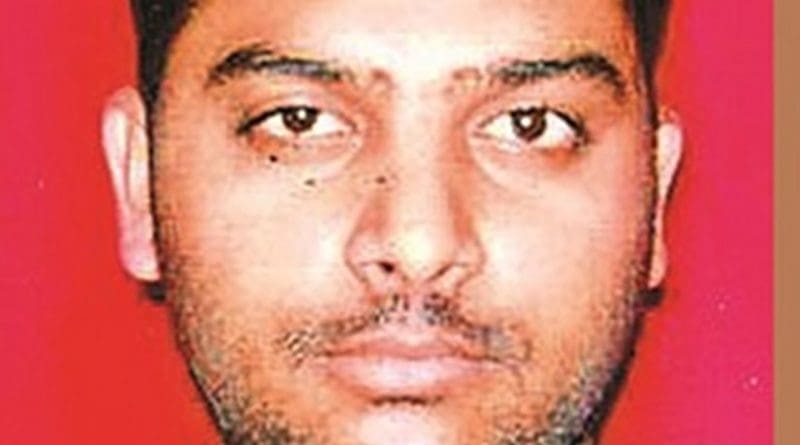Profile: Mohsin Chaudhary Of Indian Mujahideen
By Dr. Bibhu Prasad Routray and Mantraya
Mohsin is believed to be involved in several explosions carried out by the Indian Mujahideen in India including the August 2007 twin explosions in Hyderabad and the July 2008 explosions in Ahmedabad
By Bibhu Prasad Routray and Manoj Kumar Panigrahi*
Born on 6 November 1980, Mohsin Ismail Chaudhary alias Sayyed is one of the three sons of Ismail Ibrahim Choudhary residing in Manisha Complex in Mitha Nagar area of Kondhwa Khurd in Pune city. Ismail Ibrahim Choudhary originally hailed from Hyderabad.
Although not much is known about his growing up years, Mohsin is believed to have been recruited into the Indian Mujahideen (IM) by the Bhatkal brothers – Riyaz and Iqbal, the founding members of the outfit. Iqbal and Mohsin met at a 2004 religious function for which the former had arrived in Pune and was searching for fresh recruits for the IM. Mohsin, in turn, introduced Iqbal to several others in Pune. Over the next three to four years, Iqbal and Riyaz along with Yasin Bhatkal (who was arrested in 2014) worked with Mohsin to develop a terror module in Pune. By 2007, the module had graduated into a full-blown sleeper cell with its members fully trained to plan activities, coordinate with members of other sleeper cells in Maharashtra’s Marathwada region.
Mohsin is believed to be involved in several explosions carried out by the IM in India including the August 2007 twin explosions in Hyderabad and the July 2008 explosions in Ahmedabad. Arrested IM cadre Yasin Bhatkal told his interrogators that both Mohsin and his brother Akbar had executed the Hyderabad explosion to take revenge against the May 2007 explosion targeting the Mecca masjid in the city killing at least 14 people – nine in the explosion and five others in police firing to contain a riot that had followed the incident. Two radical Hindu extremists – Devendra Gupta and Lokesh Sharma – are behind bars for their involvement in the explosion at Mecca masjid. 45 people were killed in the Hyderabad twin explosions in August 2007. Yasin told that both Chaudhary brothers were trained in the use of explosives and improvised explosive devices (IEDs) for two weeks at a farm house in Chikamagalur, Karnataka. Following the explosion in Ahmedabad in which a series of 21 explosions on 26 July within a span of 70 minutes had killed 56 people Mohsin, along with three other IM members sent emails to media houses claiming responsibility for the act.
Mohsin’s brother Akbar was arrested in October 2008. He told his interrogators that he had been introduced to IM leaders Iqbal and Riyaz Bhatkal by Mohsin. Akbar also confirmed that Mohsin is an important part of the core IM module, who had played a key role in executing the explosions.
Some media reports suggest that Mohsin fled to Bangladesh after the Mumbai crime branch busted an IM module in Pune and arrested 21 people in 2008. However, investigators of the National Investigation Agency (NIA) maintain that Mohsin remained in India till 2009, frequently changing hideouts and moving between Delhi and Darbhanga. Sometime around March 2009, Mohsin escaped to Pakistan to form a safe base for launching terrorist activities in India. In Pakistan, Mohsin came in contact with several IM leaders whom he had not met before. This included Amir Reza Khan, who had been sheltered by the Inter-Services Intelligence (ISI) directorate.
According to some reports, Mohsin returned to India to execute the explosion at Pune’s German Bakery on 13 February 2010, which killed 17 people. Mohsin, Yasin and another IM senior cadre Mirza Himayat Baig had planned the attack and manufactured the explosive to be planted at the site inside an internet cafe, named Global Cyber Cafe at Udgir, in Maharashtra’s Latur district. The cafe was owned by Baig.
In September 2014, Mohsin’s brother-in-law, 27-year-old Ajaz Sheikh, also an alleged IM operative, was arrested near Saharanpur railway station in Uttar Pradesh. Shaikh was a key logistics man for the outfit and had sent emails to media houses after explosions at Jama Masjid in Delhi and Sheetla Ghat in Varanasi in 2010.
Mohsin is currently believed to be based in Pakistan. Although most likely to be in Karachi, he could be frequently changing his location within this port city and also between various other cities of the country. According to the NIA, the code words used by the IM cadres during their electronic communication to describe Mohsin are Ali, Afft and Aftab. Mohsin is known to be allied with the IM faction consisting of Riyaz, Iqbal and Jabrodh, where as Dr. Shahnawaz, Khalid, Mirza Shadab Baig and Abu Rashid have formed a separate group. In 2013, Mohsin attempted to relocate his family members to Pakistan via Kathmandu. However, the plan could not materialise.
From his Pakistani location, Mohsin is believed to be engaged in extortion activities targeting businessmen in cities like Pune and Kolkata. While most of the money generated from such activities is meant to be used in terrorist attacks, a part of the money is also passed on to the family of the arrested or killed IM cadres in India. In March 2014, Mohsin’s Pune apartment was sealed on order of the NIA.
The NIA has announced a reward of Rs.10 lakh for information leading to Mohsin’s arrest.
*Dr. Bibhu Prasad Routray is Director of Mantraya and Manoj Kumar Panigrahi is a lead researcher at Mantraya. This brief has been published under Mantraya.org’s Profiling Terror project.
Source: This article was published by Mantraya

